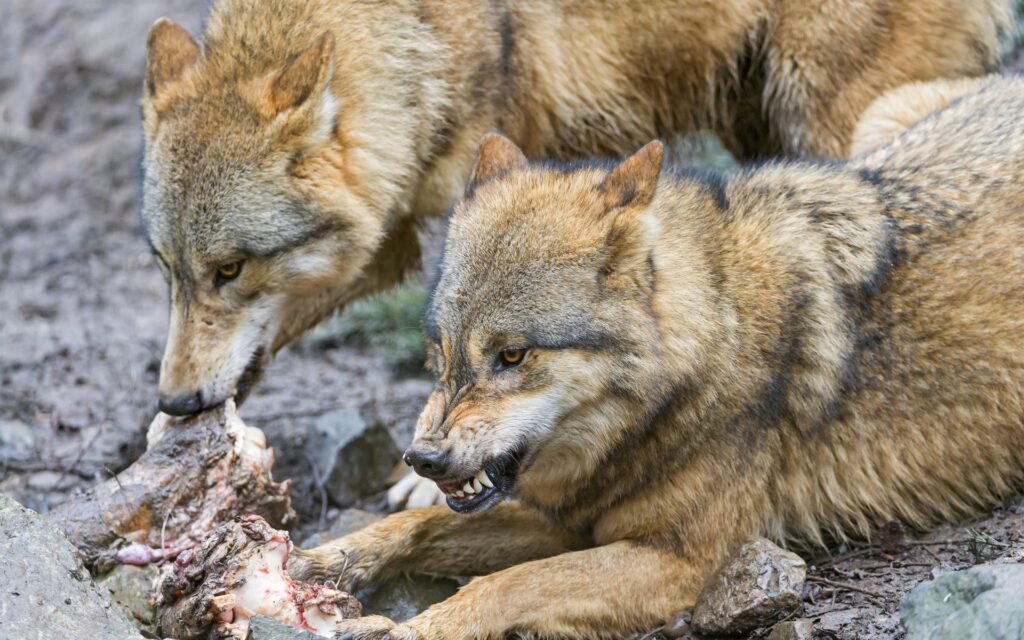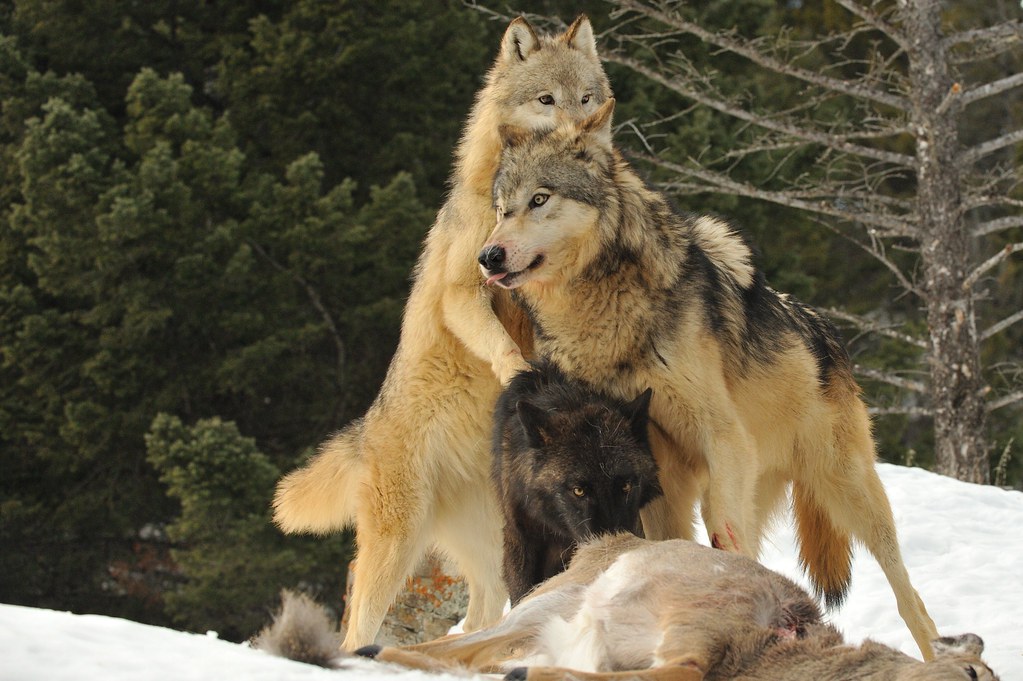Table of Contents
ToggleIntroduction

Wolves and foxes are members of the Canidae family but belong to different genera wolves belong to the genus Canis, while foxes belong to the genus Vulpes. Do wolves eat foxes despite their shared ancestry, these species differ significantly in their ecological niches, behavior, and dietary preferences. One common question in understanding their interactions is whether wolves prey upon foxes. This comprehensive exploration aims to shed light on the relationship between wolves and foxes, delving into their interactions, hunting behaviors, and the factors influencing their dietary choices.
Understanding Wolves’ Diet
Wolves are apex predators known for their social structure and cooperative hunting behaviors. Their diet primarily consists of ungulates such as deer, elk, and moose and smaller mammals like rabbits, rodents, and occasionally smaller carnivores. However, the dietary preferences of wolves can vary depending on factors such as habitat, prey availability, and pack dynamics.
Foxes In The Wild
On the other hand, Foxes are smaller canines known for their adaptability and diverse diet. They are omnivorous and opportunistic feeders, consuming a wide range of food, including small mammals, birds, insects, fruits, and even scavenging on carrion. Their ability to thrive in various habitats, from forests to urban environments, contributes to their survival.
Interactions Between Wolves And Foxes
The relationship between wolves and foxes in the wild is complex and multifaceted. While they may share territories and habitats, their interactions are not solely centered around predation. Wolves and foxes often compete for similar food sources, and conflicts can arise over resources like food and shelter. However, these interactions are only sometimes antagonistic, as they can also coexist without confrontation.
Ecological Dynamics
Wolves: Wolves, known for their social structure and cooperative hunting, primarily target large ungulates such as deer, elk, and moose. They typically hunt in packs, leveraging their strength in numbers to pursue and bring down these sizable herbivores. This behavior is essential for maintaining their populations and ensuring a sustainable food supply for the pack.
Foxes: On the other hand, Foxes exhibit a solitary lifestyle, scavenging and hunting smaller prey like rodents, rabbits, birds, and insects. Their adaptability to various habitats and ability to survive on a diverse diet contribute to their widespread distribution across different ecosystems.
Overlapping Territories: Both wolves and foxes occupy territories that can occasionally overlap. This coexistence results from their ability to adapt to various environments, from forests to grasslands. Despite this overlap, interactions between wolves and foxes are not extensively documented or researched in the wild.
Predatory Behavior
Wolf Diet: Studies and observations indicate that wolves predominantly rely on ungulates as their primary food source. Limited evidence suggests that wolves actively seek out and consume foxes as a regular part of their diet. However, in times of scarcity, wolves may target smaller prey, potentially including foxes.
Fox Vulnerability: Due to their smaller size and solitary nature, Foxes might be vulnerable to larger predators like wolves. Instances of wolves preying on foxes could occur in specific circumstances, especially if the opportunity arises when a fox is isolated or injured.
Factors Influencing Predation
Competition: Competition for resources might influence interactions between wolves and foxes. In areas with limited food availability, increased competition among carnivores could lead to wolves targeting foxes as potential prey.
Prey Availability: The abundance of larger prey species, which wolves prefer, might reduce the likelihood of wolves actively seeking outfoxes. When ample food sources of larger prey are available, wolves may not perceive foxes as a substantial or necessary food option.
Do Wolves Prey Upon Foxes

Whether wolves actively hunt and consume foxes is a topic that needs more conclusive evidence. While there have been occasional observations and reports of wolves preying on foxes, it is not common. Wolves generally prioritize larger prey that provide more sustenance for the entire pack. Wolves typically hunt ungulates by working together as a pack and taking advantage of both individual and collective strength. Being smaller and more agile, Foxes might typically fall outside the primary targets of a wolf pack’s hunting strategy.
Factors Influencing Predation Dynamics
Several factors contribute to the dynamics of predator-prey relationships between wolves and foxes:
Prey Abundance: When preferred prey species are scarce, predators might resort to alternative food sources, potentially increasing the likelihood of predation on smaller mammals like foxes.
Territorial Behavior: Territories of wolves and foxes might overlap, leading to occasional encounters. However, conflicts over resources are more common than instances of direct predation.
Habitat and Seasonal Variations: Environmental conditions, such as changes in habitat and seasonal variations, can impact the availability of prey, influencing the predatory behavior of both wolves and foxes.
Conclusion
While wolves and foxes share habitats and sometimes interact, evidence supporting the regular predation of foxes by wolves remains limited. Wolves typically prioritize larger prey to sustain their packs. However, occasional instances of predation might occur under specific circumstances, such as scarcity of preferred prey or territorial conflicts. Understanding the intricacies of predator-prey relationships among canids requires further research and comprehensive ecological studies to unravel the complexities of their interactions in the wild.







